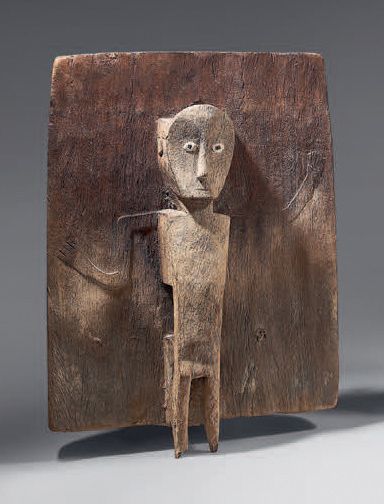Description
Toraja burial chamber door (Sulawesi) It is traditionally carved with an anthropomorphic figure in high relief, the legs protruding from the lower edge. The arms are represented in movement in slight relief. The eyes are inlaid. Hard wood with a beautiful faded patina. 61 x 44 cm Provenance : According to the collector's notes, it was acquired from the Galerie Leloup (Paris) on April 14, 1984.
37
Toraja burial chamber door (Sulawesi) It is traditionally carved with an anthropomorphic figure in high relief, the legs protruding from the lower edge. The arms are represented in movement in slight relief. The eyes are inlaid. Hard wood with a beautiful faded patina. 61 x 44 cm Provenance : According to the collector's notes, it was acquired from the Galerie Leloup (Paris) on April 14, 1984.
You may also like
